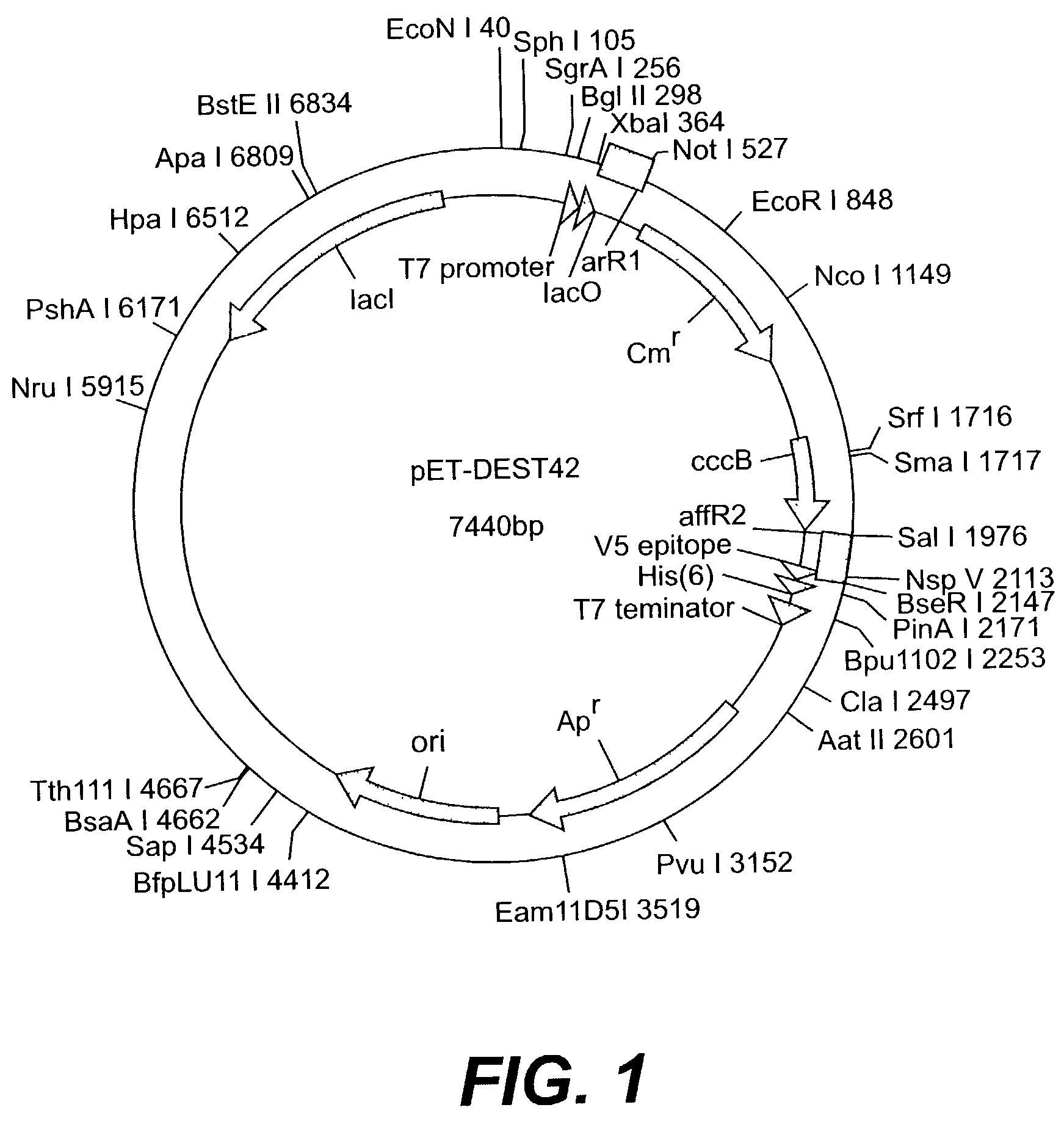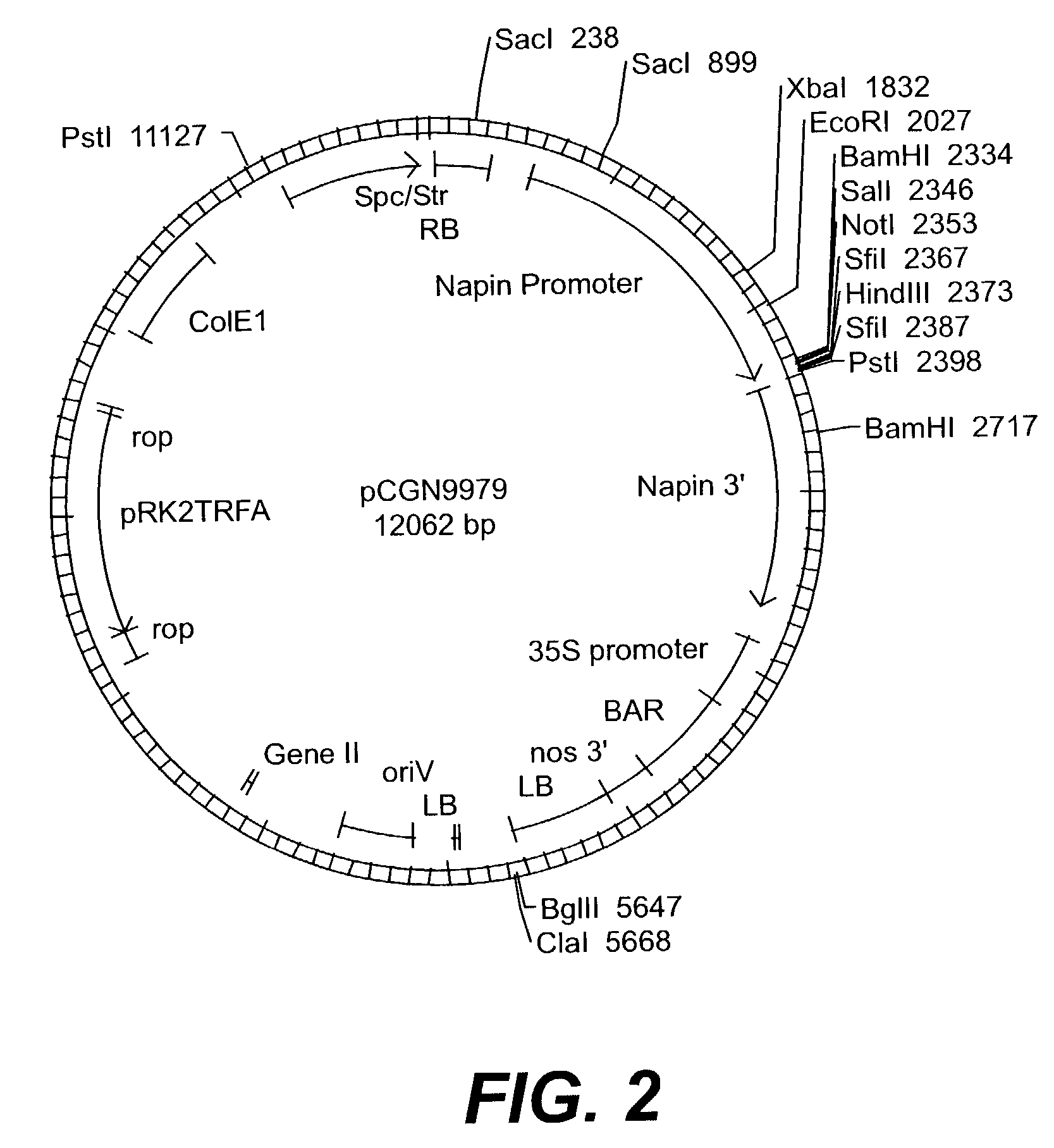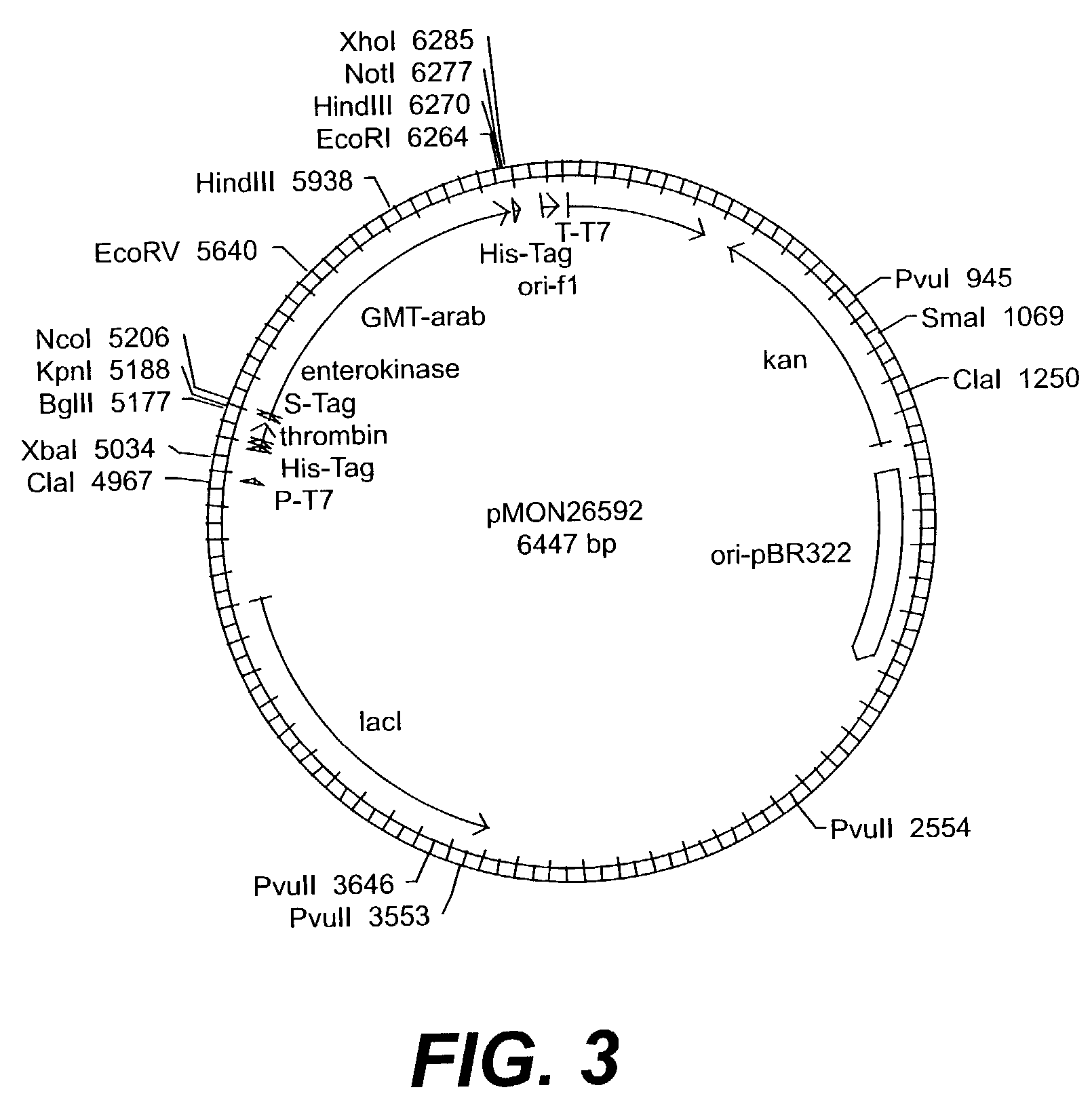Methyltransferase from cotton and uses thereof
- Summary
- Abstract
- Description
- Claims
- Application Information
AI Technical Summary
Benefits of technology
Problems solved by technology
Method used
Image
Examples
example 1
[0347]A DNA sequence of gamma-tocopherol methyltransferase from Arabidopsis thaliana (NCBI General Identifier Number 4106537) is used to search databases for plant sequences with homology to GMT using BLASTN (Altschul et al., Nucleic Acids Res. 25:3389-3402 (1997); see also the Basic Local Alignment Search Tool (BLAST) available at the World Wide Web stie of the National Center for Biotechnology Information). Results are shown in table 1, below.
[0348]
TABLE 1BLAST RESULTS FOR PLANT SEQUENCES ENCODINGPOLYPEPTIDES HOMOLOGOUS TO ARABIDOPSISGAMMA-TOCOPHEROL METHYLTRANSFERASESequences producing significant alignments:Score (bits)E ValueArabidopsis thaliana (Columbia ecotype)7070.0Brassica napus S8 clone611e−179Brassica napus P4 clone605e−177cotton GMT459e−133soybean GMT2454e−132soybean GMT1453e−132soybean GMT3453e−131Marigold GMT (Tagetes erecta)446e−129tomato GMT441e−128cuphea GMT440e−127Rice GMT430e−124corn GMT428e−123sorghum bicolor GMT3289e−94
[0349]The protein identity of these seque...
example 2
[0359]Constructs are prepared to direct expression of the Arabidopsis, P4 and S8 Brassica napus, Cuphea pulcherrima, and Gossypium hirsutum GMT sequences in plants. The coding region of each GMT is amplified from either the appropriate EST clone or cDNA, as appropriate. Double stranded DNA sequence is obtained of all PCR products to verify that no errors are introduced by the PCR amplification.
[0360]An S8 Brassica GMT coding sequence is amplified from Brassica napus leaf cDNA as follows: PolyA+ RNA is isolated from Brassica napus (var. Quantum) leaf tissue using an adapted biotin / streptavadin procedure based on the “mRNA Capture Kit” by Roche Molecular Biochemicals (Indianapolis, Ind.). Young leaf tissue is homogenized in CTAB buffer (50 mM Tris-HCl pH 9, 0.8M NaCl, 0.5% CTAB, 10 mM EDTA),extracted with chloroform, and pelleted. As specified by the manufacturer's instructions, polyA+ RNA in the soluble fraction is hybridized to biotin-labeled oligo-dT, immobilized on streptavadin-co...
example 3
[0375]Computer programs are used to predict the chloroplast targeting peptide cleavage sites of the plant GMT proteins. The predictions of CTPs by using two programs: “Predotar” and “ChloroP” (Center for Biological Sequence Analysis, Lyngby, Denmark) are as follows
1) Program: Predotar
[0376]
Sequence IDScoreCut SiteP-ValueGossypium4.5649 * 503.0496E+07Brassica2.2751 * 522.3192E+05Cuphea1.96undetermined2.7934E−01
2) Chloroplast Target Peptide Prediction Results
Number of Query Sequences: 5
[0377]
NameLengthScorecTPCS-scorecTP-lengthArabidopsis3480.587Y7.83450Gossypium3450.580Y4.11648Brassica3470.581Y8.14251Cuphea3760.573Y1.74664Zea mays3520.560Y4.80848
[0378]Based on this information GMT proteins from plant sources are engineered to remove the predicted chloroplast target peptides to allow for the expression of the mature protein in E. coli. In order for these proteins to be expressed in a prokaryotic expression system, an amino terminal methionine is required. This can be accomplished, for...
PUM
| Property | Measurement | Unit |
|---|---|---|
| Fraction | aaaaa | aaaaa |
| Mass | aaaaa | aaaaa |
| Mass | aaaaa | aaaaa |
Abstract
Description
Claims
Application Information
 Login to View More
Login to View More - R&D
- Intellectual Property
- Life Sciences
- Materials
- Tech Scout
- Unparalleled Data Quality
- Higher Quality Content
- 60% Fewer Hallucinations
Browse by: Latest US Patents, China's latest patents, Technical Efficacy Thesaurus, Application Domain, Technology Topic, Popular Technical Reports.
© 2025 PatSnap. All rights reserved.Legal|Privacy policy|Modern Slavery Act Transparency Statement|Sitemap|About US| Contact US: help@patsnap.com



